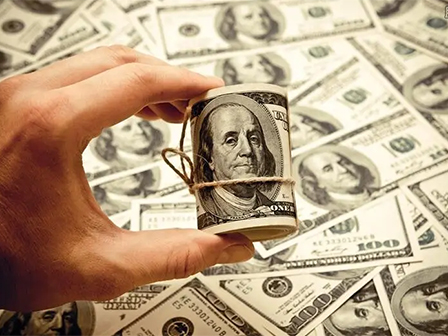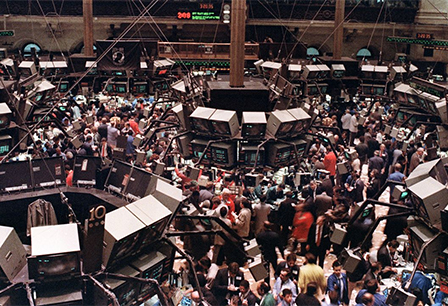As the dollar breaks parity vs. the euro, echoes of "is the euro a buy here" seem to be heard across trading floors.
Other than reaching a psychological milestone, the parity really has no meaning if looked at in its financial and economic context. To put it simply, the Fed is on an interest-rate tightening cycle given the difference between its Fed funds rate and estimated consumer-price inflation. The European Central Bank, riddled with even worse inflation, has yet to really raise interest rates, and is still providing monetary easing to an extent, despite the troubling inflation prospects. This difference in interest rate differentials is what is really driving the dollar vs. the euro for the time being along with the dollar's safe-haven status, but it is never really that simple.
There is no doubt that the global economy is going through a recession. The U.S. Democrats can try as hard as they like to redefine it, fooling the public about whether they are in a "technical" recession, but the numbers speak for themselves. After the Covid-induced stimulus surge, prices for goods and services rallied in a short time, creating inflation shocks in a supply constrained system, but demand is now cooling off.
Consumers are hit across the board from rising mortgage costs, lower wage income growth, and a high and rising cost of living, given the surge in gas, and electricity prices this year. European benchmark gas Dutch TTF natural gas futures prices are trading north of 270 euro per megawatt hour vs. sub-100 euros/Mwh at the start of the year. German electricity prices forward one-year prices are trading close to 600 euro/Mwh. U.S. gas prices typically average between $2-$4/MMBtu, or Metric Million British Thermal Unit, but this year have moved to as high as $10/MMBtu. Even U.S. consumers have no reprieve as they face the highest electricity prices in decades. With the consumer unable to spend, this has drastic implications for gross domestic product for both the economies going forward.
Another worrying development is the dollar vs. the Chinese yuan. This morning we saw the Chinese CSI300 Index falling below its short-term trendline. This is despite the smaller rounds of stimulus China has been putting out recently to support their housing sector. This is seeing a weaker yuan against a rising dollar. We feel these measures by China are a futile attempt to support housing prices/market, it is in no way accelerating or growing. Underneath it all, China's domestic demand is seriously worrying judging by the heat waves, power shutdowns and cutbacks which all have negative implications for their GDP target for this year. China is exposed to Europe via Germany so any hiccups in domestic demand will not help an ailing domestic Chinese economy.
The next catalyst for the market is the Jackson Hole meeting at the end of the month where Fed Chair Jerome Powell is going to preside as the market eagerly waits to hear if there is any change in the Fed's hawkish stance. Judging by the way consumer price index components are moving, it does not seem likely to see the Fed reversing its tightening stance. A 50-basis point rate increase is almost a certainty, but the market is debating whether the Fed will be aggressive enough to raise interest rates by 75 basis point. The dollar continues to make new highs especially vs. the euro. The euro 5-year forward looking inflation measures are higher, but the ECB is unable to do anything, given stretched balance sheets and huge debt piles. The dollar may be overbought against the euro, that relationship is being driven by the dollar interest rate path more than Europe's fate.
If the Fed does pivot, then we could see a massive collapse in the dollar, but that pivot seems much further away. Unless, of course, the system breaks down as it did back in 2019....
Let's look at the euro, dollar and yuan and see what a Fed pivot could do to the buck. Liquidity, which has been the biggest driving force in the market over the past decade, is also being withdrawn at a faster rate where the Fed is due to double the pace of quantitative tightening in September to $95 billion per month, compared to the peak quantitative easing pace of $120 billion per month. But this free money has come to an end. It remains to be seen when the Fed blinks to bring back the punchbowl, but regrettably that "put" strike moves lower every day inflation prints higher.












